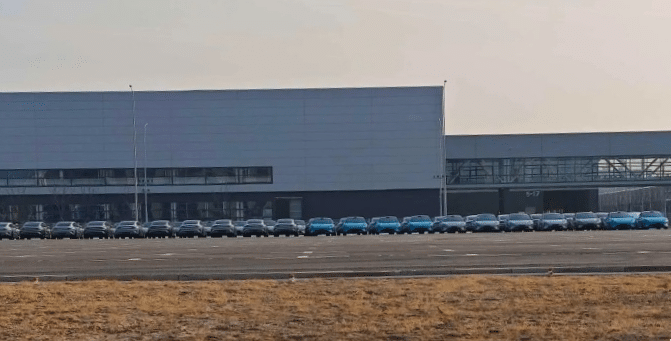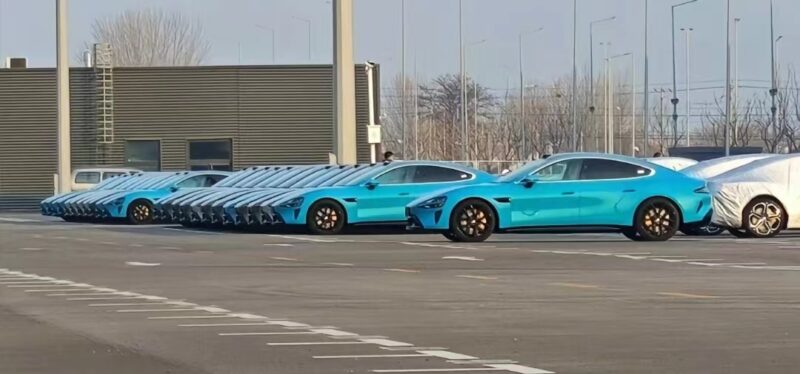Hundreds of Xiaomi SU7s pile up in front of Beijing factory
Hundreds of Xiaomi SU7 electric sedans were spotted in the parking lot close to its Beijing factory, hinting that mass production has already started. Chinese media previously reported that the new EV will enter SOP (start of production) in February, reach 2,000 monthly output in March, and ramp up to 10,000 units monthly by July.
The EV is contract-manufactured in Beijing by the BAIC Off-road Vehicle Co., which is a subsidiary of Beijing Automotive Industry Holding Co. Ltd (BAIC). Interestingly, BAIC also produces Mercedes-Benz cars in China under the joint venture Beijing-Benz, which was established in 2005 and where BAIC owns 51%.
BAIC is also one of the main Chinese shareholders in Mercedes-Benz itself, holding a 10% stake in the German legacy maker. The other one is Geely, which owns another 10%.




The trial production of the SU7 started in December when Xiaomi manufactured 300 pre-production cars for testing purposes. CarNewsChina reported that road and track tests were undergone in China, and Xiaomi recently broke headlines in Chinese media as its test vehicle crashed on a snowy road.

On February 8, Xiaomi released a winter testing video, flexing the sports capabilities of their electric sedan in the extreme cold of -33°C near Heiha City in Nothern, China. Lei Jun, Xiaomi CEO, said during the unveiling conference that Xiaomi wants to be the king of winter range and efficiency, highlighting the benefits of their in-house developed heat pump.
The consumer electronic giant officially unveiled the Xiaomi SU7 on December 28. The performance version is called Max and is AWD with a peak power of 495 kW (664 hp) and 838 Nm torque. That is enough for 0-100 km/h acceleration in 2.78 seconds and 265 km/h top speed. The electricity is stored in a ternary (NMC) 101 kWh battery from CATL, good for an 800 km CLTC (China Light-Duty Vehicle Test Cycle) range. The EV also features 875 V architecture, so expect some fast charging.
The standard RWD version was also unveiled, featuring a maximum power of 220 kW (295 hp) and 400 Nm of torque. It can sprint 0-100 km/h in 5.28 seconds. The battery has a 73.6 kWh capacity, providing a 668 km range under the CLTC.
The battery can recharge 390 km in 10 minutes, more than the Tesla Model S Plaid. In 5 minutes, SU7 can add 220 km, and in 15 minutes, 510 km, Xiaomi claims.
The SU7 sits on Xiaomi’s Modena platform and is slightly longer than the Porsche Taycan, its main competitor. The dimensions are 4997/1963/1455 mm (L/W/H), with a wheelbase of 3000 mm. The car has a sizeable 105-liter frunk and boot space with 517 liters.

The price of the car is unknown, and some Chinese media reported that the price would be 361,400 yuan (50,350 USD), which Xiaomi briefly denied as incorrect. Previously, Lei Jun said that some fans have unrealistic expectations about the price and to stop trolling with guesses as 99,900 yuan (14,000 USD) or 149,900 yuan (21,000 USD). CarNewsChina expects the price to be around 300,000 yuan (42,000 USD).


The delivery start is yet officially unknown, but Lei Jun previously said it will be in the first half of the year. We will keep an eye on it.



